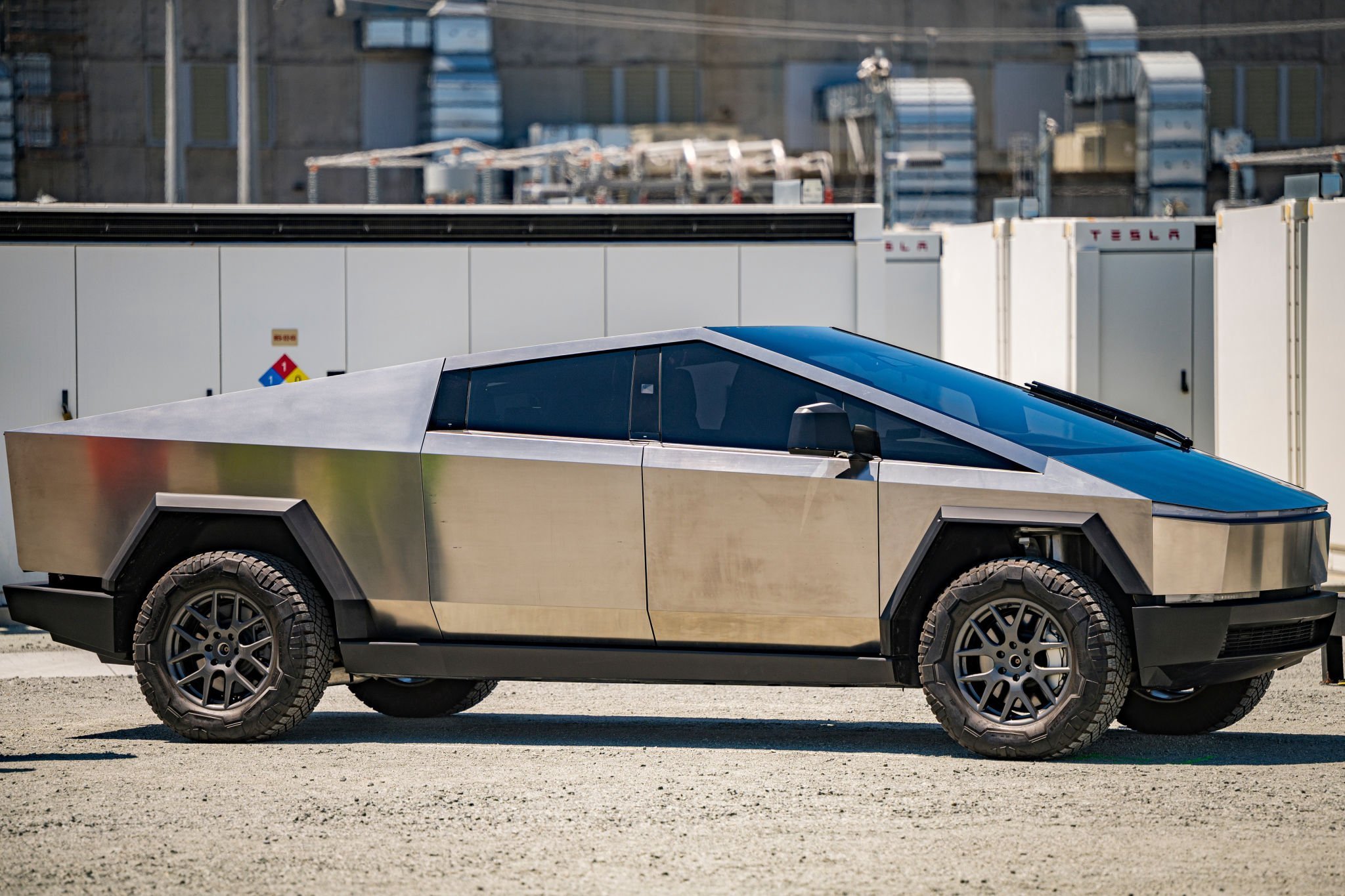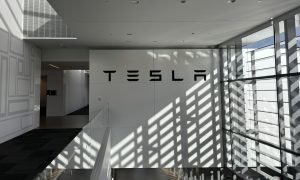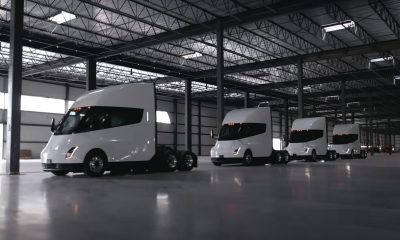

News
Tesla FSD is the answer to concerns about EVs’ possible “added” road risks
A recent article from Slate has brought up a rather interesting concern about electric vehicles and their wide adoption. Since electric cars tend to be a lot heavier than their combustion-powered counterparts, there is a nonzero chance that they could actually be more dangerous to pedestrians in the event of a crash. Tesla FSD could be the answer to these concerns.
There is an uncomfortable truth in the United States, and that is the fact that road fatalities are climbing. The National Highway Traffic Safety Administration (NHTSA), for one, noted that American road deaths soared during Q1 2022, rising 7% to 9,560 fatalities, the highest quarterly toll since 2002. The numbers are sobering, as they suggest that compared to pedestrians in countries like France and Canada, Americans are more than twice as likely to die in a crash.
There are quite a few factors behind these disturbing statistics, but one of them is believed to be the prevalence of overly large and heavy vehicles like full-size trucks and SUVs. While trucks are generally designed for work, full-sized pickups are now widely used by casual drivers to the point where some pickups barely see a day of legitimate work. SUVs are also all the rage. But while these vehicles could be quite safe for those inside them, they are a nightmare for the pedestrians that they might hit in the event of an accident.
As noted by Slate, one study actually found that the shift to SUVs over the past couple of decades ended up leading to over 1,000 more pedestrian deaths. Now, it should be noted that these large vehicles are already overly heavy with an internal combustion engine. When they are powered by a giant battery pack and equipped with electric motors, they become even heavier and a whole lot faster. The over-9,000-pound Hummer EV is the poster child of this, as the behemoth is capable of hitting highway speeds in about 3.3 seconds.
But inasmuch as these concerns are valid, heavy electric vehicles are only really just as dangerous as their drivers and safety features. Tesla has been making overly-heavy and ridiculously-fast sedans and crossovers for many years, yet its vehicles constantly rank among the safest on the road. This is due in no small part to the company’s active and passive safety features, which are standard on every Tesla that gets built at each of the company’s vehicle factories, both in the United States and abroad.
And coupled with Tesla’s FSD software, the risks for heavy electric vehicles are likely even less. Behind all the drama and smear campaigns targeted toward the advanced driver-assist system, after all, FSD is an incredibly cautious system that takes pedestrian safety as a top priority. Tests of Tesla FSD Beta releases have shown this time and time again — the system always keeps people around the car as safe as possible.
The use of systems like FSD Beta would likely be more widespread as the adoption of electric vehicles becomes more prevalent. Teslas would likely continue to be among the safest vehicles on the road, despite the company likely producing one of the heaviest vehicles on the market in the Tesla Semi. Fortunately, Tesla does seem to be open to the idea of having its software, like Autopilot, licensed to other automakers. This means that Tesla’s stellar safety systems could be rolled out to more vehicles, including those beyond the reach of the company’s products.
This, however, would require other automakers to admit that Tesla’s Autopilot and FSD are industry-leading solutions for pedestrian safety. Such an admission takes a lot of humility, and thus, is easier said than done. But the longer other automakers wait to roll out systems that are comparable to FSD or at least Autopilot, the longer pedestrians are exposed to an increasing number of electric vehicles that could indeed be too heavy and too fast in an accident.
Don’t hesitate to contact us with news tips. Just send a message to simon@teslarati.com to give us a heads up.
News
Tesla begins Robotaxi certification push in Arizona: report
Tesla seems serious about expanding its Robotaxi service to several states in the coming months.

Tesla has initiated discussions with Arizona transportation regulators to certify its driverless Robotaxi service in the state, as per a recent report from Bloomberg News. The move follows Tesla’s launch of its Robotaxi pilot program in Austin, Texas, as well as CEO Elon Musk’s recent comments about the service’s expansion in the Bay Area.
The Arizona Department of Transportation confirmed to Bloomberg that Tesla has reached out to begin the certification process for autonomous ride-sharing operations in the state. While details remain limited, the outreach suggests that Tesla is serious about expanding its driverless Robotaxi service to several territories in the coming months.
The Arizona development comes as Tesla prepares to expand its service area in Austin this weekend, as per CEO Elon Musk in a post on X. Musk also stated that Tesla is targeting the San Francisco Bay Area as its next major market, with a potential launch “in a month or two,” pending regulatory approvals.
Tesla first launched its autonomous ride-hailing program on June 22 in Austin with a small fleet of Model Y vehicles, accompanied by a Tesla employee in the passenger seat to monitor safety. While still classified as a test, Musk has said the program will expand to about 1,000 vehicles in the coming months. Tesla will later upgrade its Robotaxi fleet with the Cyercab, a two-seater that is designed without a steering wheel.
Sightings of Cybercab castings around the Giga Texas complex suggests that Tesla may be ramping the initial trial production of the self-driving two-seater. Tesla, for its part, has noted in the past that volume production of the Cybercab is expected to start sometime next year.
In California, Tesla has already applied for a transportation charter-party carrier permit from the state’s Public Utilities Commission. The company is reportedly taking a phased approach to operating in California, with the Robotaxi service starting with pre-arranged rides for employees in vehicles with safety drivers.
News
Tesla sets November 6 date for 2025 Annual Shareholder Meeting
The automaker announced the date on Thursday in a Form 8-K.

Tesla has scheduled its 2025 annual shareholder meeting for November 6, addressing investor concerns that the company was nearing a legal deadline to hold the event.
The automaker announced the date on Thursday in a Form 8-K submitted to the United States Securities and Exchange Commission (SEC). The company also listed a new proposal submission deadline of July 31 for items to be included in the proxy statement.
Tesla’s announcement followed calls from a group of 27 shareholders, including the leaders of large public pension funds, which urged Tesla’s board to formally set the meeting date, as noted in a report from The Wall Street Journal.
The group noted that under Texas law, where Tesla is now incorporated, companies must hold annual meetings within 13 months of the last one if requested by shareholders. Tesla’s previous annual shareholder meeting was held on June 13, 2024, which placed the July 13 deadline in focus.
Tesla originally stated in its 2024 annual report that it would file its proxy statement by the end of April. However, an amended filing on April 30 indicated that the Board of Directors had not yet finalized a meeting date, at least at the time.
The April filing also confirmed that Tesla’s board had formed a special committee to evaluate certain matters related to CEO Elon Musk’s compensation plan. Musk’s CEO performance award remains at the center of a lengthy legal dispute in Delaware, Tesla’s former state of incorporation.
Due to the aftermath of Musk’s legal dispute about his compensation plan in Delaware, he has not been paid for his work at Tesla for several years. Musk, for his part, has noted that he is more concerned about his voting stake in Tesla than his actual salary.
At last year’s annual meeting, TSLA shareholders voted to reapprove Elon Musk’s compensation plan and ratified Tesla’s decision to relocate its legal domicile from Delaware to Texas.
Elon Musk
Grok coming to Tesla vehicles next week “at the latest:” Elon Musk
Grok’s rollout to Tesla vehicles is expected to begin next week at the latest.

Elon Musk announced on Thursday that Grok, the large language model developed by his startup xAI, will soon be available in Tesla vehicles. Grok’s rollout to Tesla vehicles is expected to begin next week at the latest, further deepening the ties between the two Elon Musk-led companies.
Tesla–xAI synergy
Musk confirmed the news on X shortly after livestreaming the release of Grok 4, xAI’s latest large language model. “Grok is coming to Tesla vehicles very soon. Next week at the latest,” Musk wrote in a post on social media platform X.
During the livestream, Musk and several members of the xAI team highlighted several upgrades to Grok 4’s voice capabilities and performance metrics, positioning the LLM as competitive with top-tier models from OpenAI and Google.
The in-vehicle integration of Grok marks a new chapter in Tesla’s AI development. While Tesla has long relied on in-house systems for autonomous driving and energy optimization, Grok’s integration would introduce conversational AI directly into its vehicles’ user experience. This integration could potentially improve customer interaction inside Tesla vehicles.
xAI and Tesla’s collaborative footprint
Grok’s upcoming rollout to Tesla vehicles adds to a growing business relationship between Tesla and xAI. Earlier this year, Tesla disclosed that it generated $198.3 million in revenue from commercial, consulting, and support agreements with xAI, as noted in a report from Bloomberg News. A large portion of that amount, however, came from the sale of Megapack energy storage systems to the artificial intelligence startup.
In July 2023, Musk polled X users about whether Tesla should invest $5 billion in xAI. While no formal investment has been made so far, 68% of poll participants voted yes, and Musk has since stated that the idea would be discussed with Tesla’s board.
-

 Elon Musk1 week ago
Elon Musk1 week agoTesla investors will be shocked by Jim Cramer’s latest assessment
-

 Elon Musk3 days ago
Elon Musk3 days agoElon Musk confirms Grok 4 launch on July 9 with livestream event
-

 Elon Musk16 hours ago
Elon Musk16 hours agoxAI launches Grok 4 with new $300/month SuperGrok Heavy subscription
-

 News7 days ago
News7 days agoTesla Model 3 ranks as the safest new car in Europe for 2025, per Euro NCAP tests
-

 Elon Musk2 weeks ago
Elon Musk2 weeks agoA Tesla just delivered itself to a customer autonomously, Elon Musk confirms
-

 Elon Musk1 week ago
Elon Musk1 week agoxAI’s Memphis data center receives air permit despite community criticism
-

 Elon Musk2 weeks ago
Elon Musk2 weeks agoTesla’s Omead Afshar, known as Elon Musk’s right-hand man, leaves company: reports
-

 News2 weeks ago
News2 weeks agoXiaomi CEO congratulates Tesla on first FSD delivery: “We have to continue learning!”
















